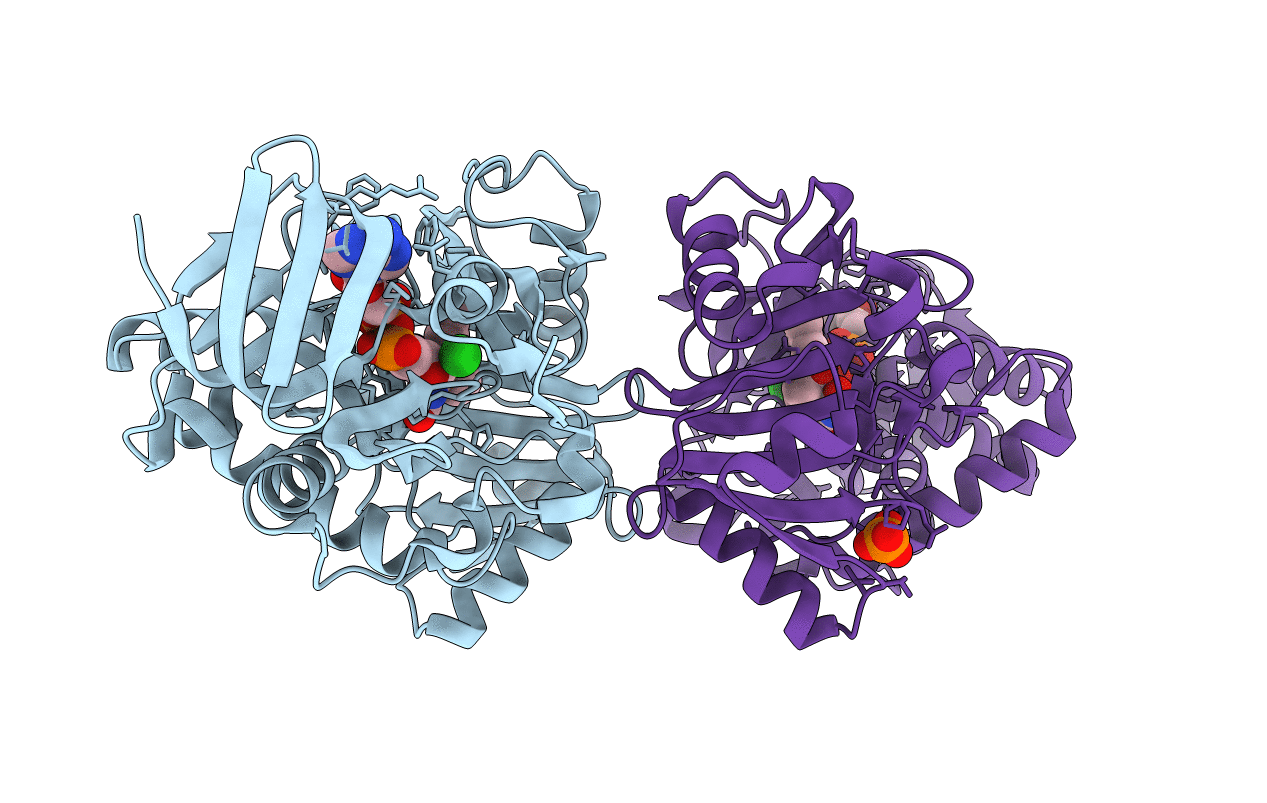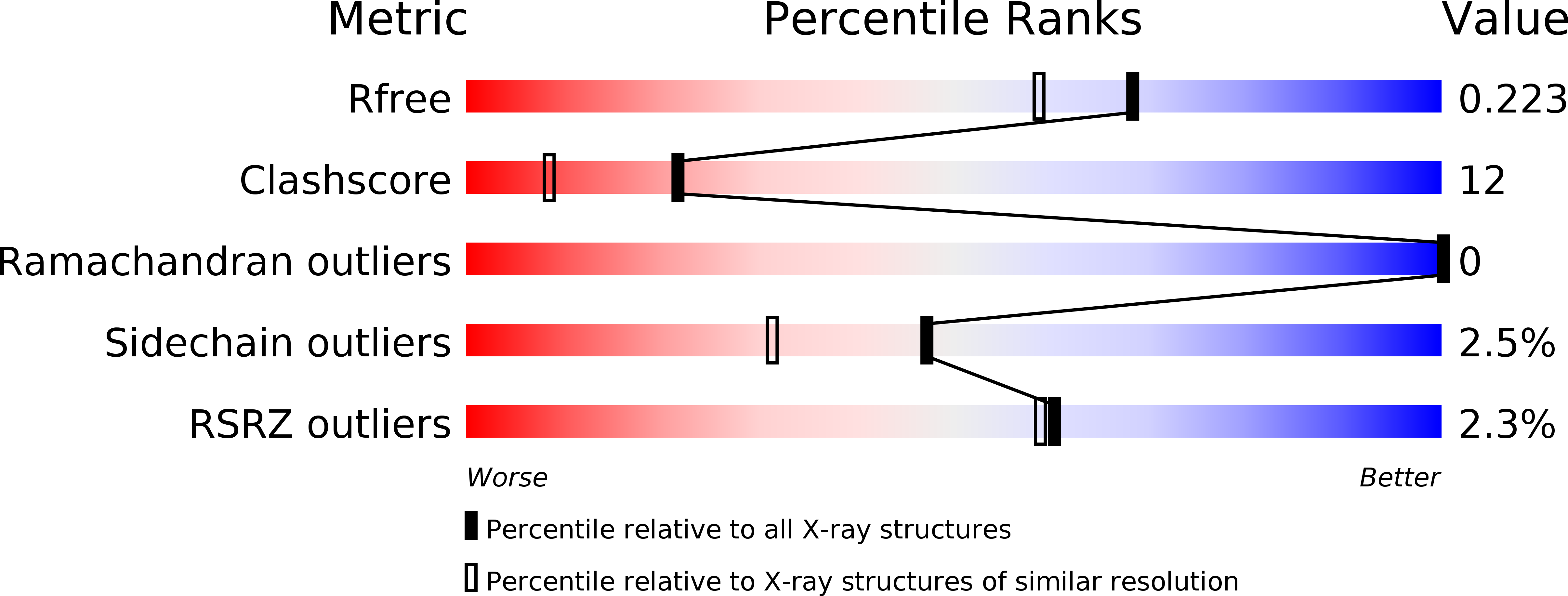
Deposition Date
2005-07-07
Release Date
2006-01-17
Last Version Date
2024-11-06
Entry Detail
PDB ID:
2A89
Keywords:
Title:
Monomeric Sarcosine Oxidase: Structure of a covalently flavinylated amine oxidizing enzyme
Biological Source:
Source Organism:
Bacillus sp. (Taxon ID: 69000)
Host Organism:
Method Details:
Experimental Method:
Resolution:
1.85 Å
R-Value Free:
0.22
R-Value Work:
0.17
Space Group:
P 1 21 1


